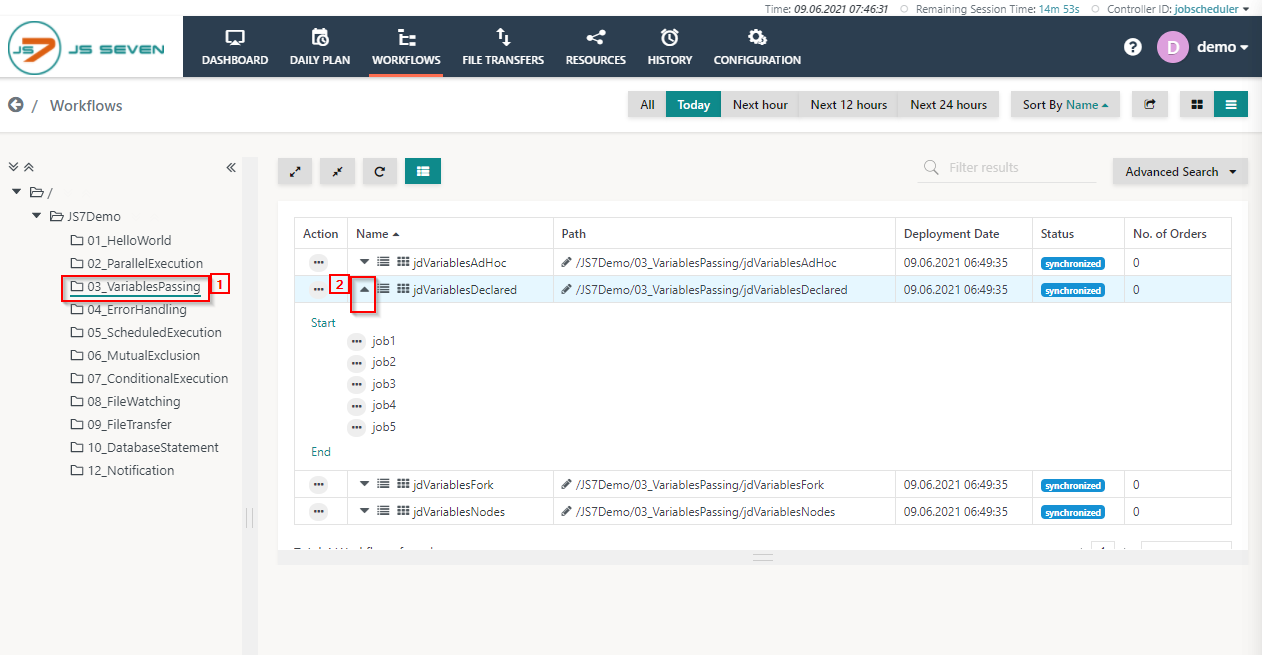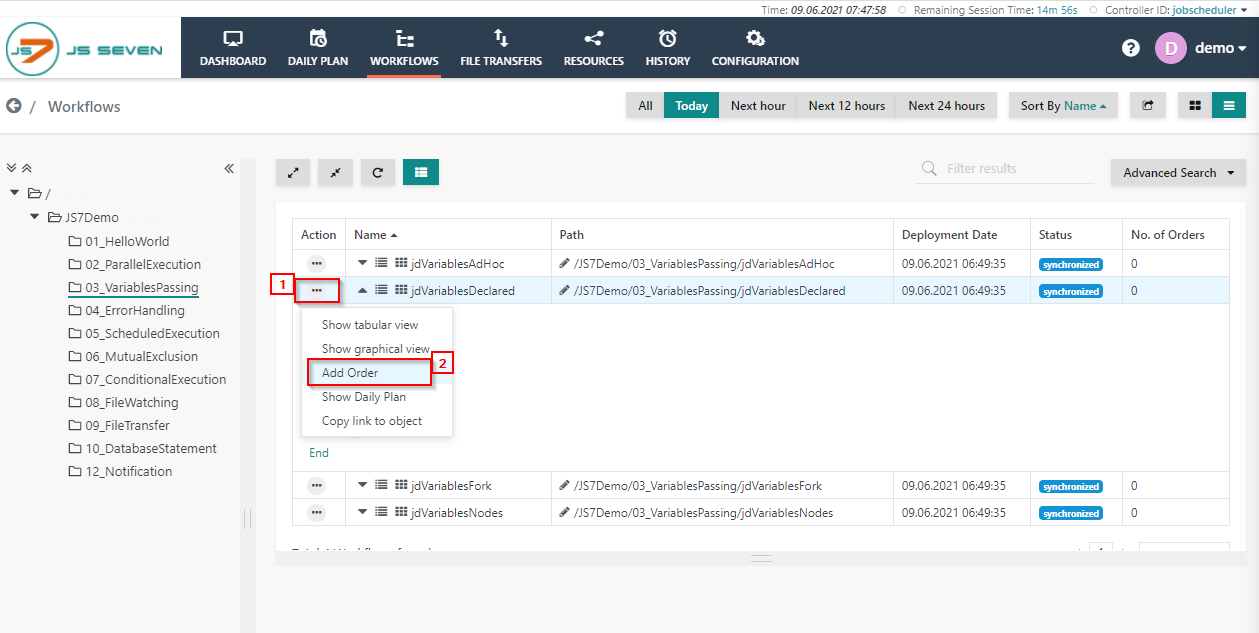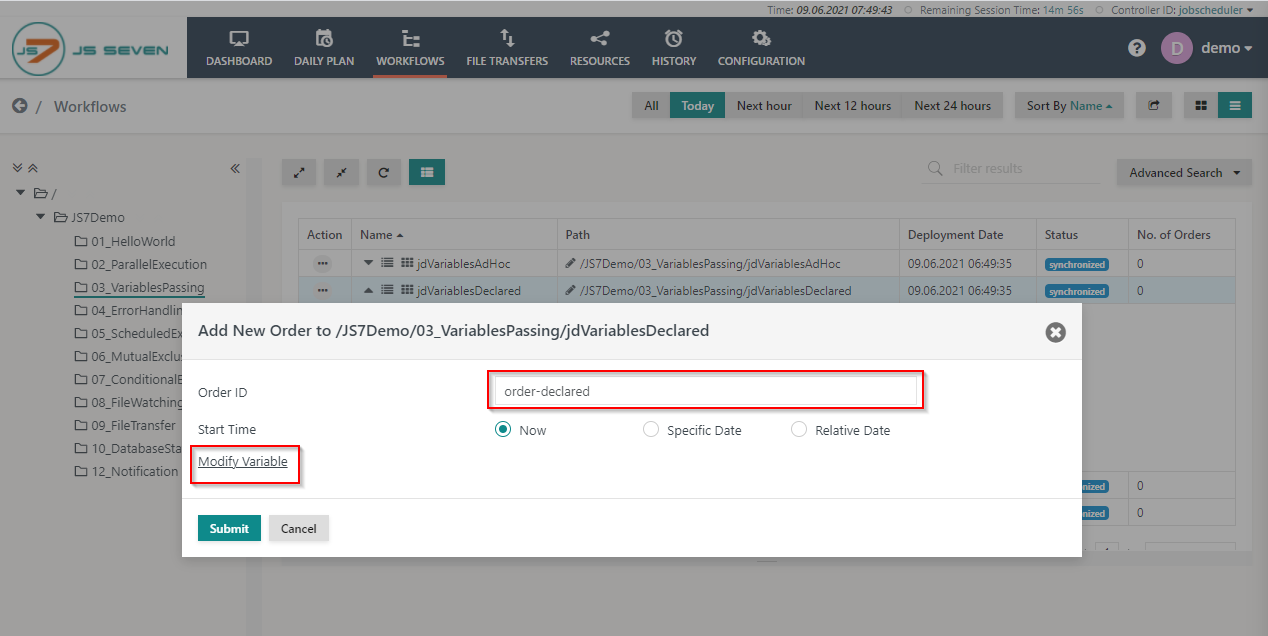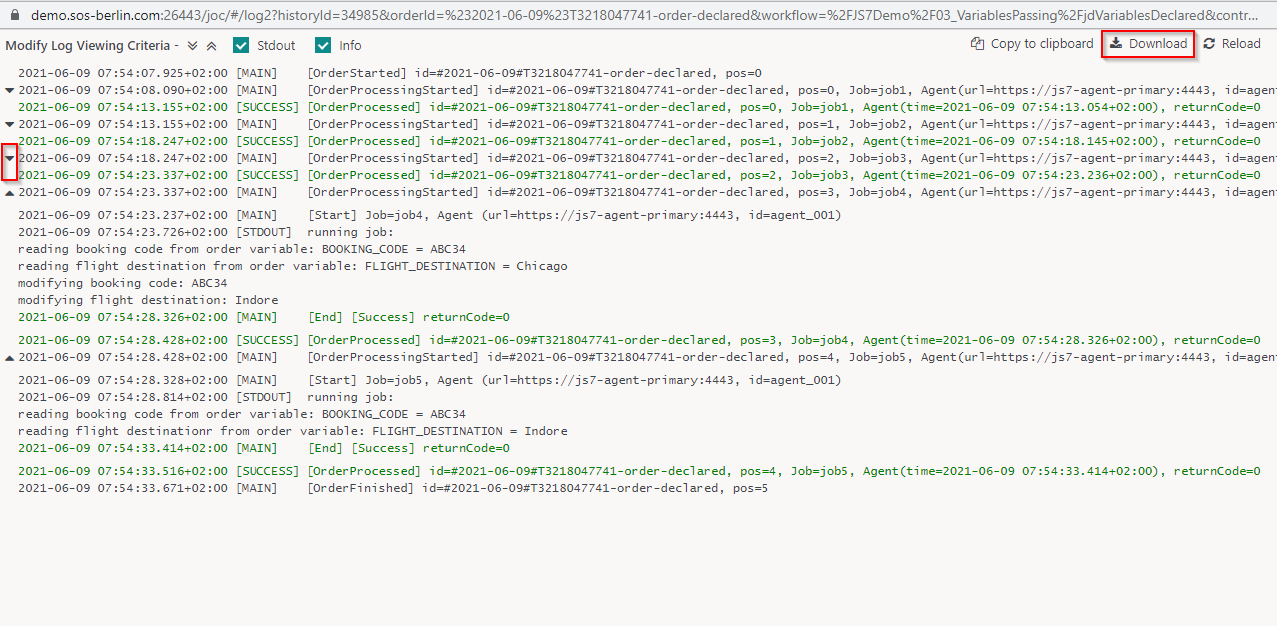Introduction
JS7 - Variables are used to parameterize the execution of jobs in a workflow. Variables are declared for the workflow by specifying a name and data type and optionally a default value. Variables can be used in a number of places:
- As an Environment Variable: the environment variable is available for all shell jobs in a workflow.
- As a Job Resource: You can assign a set of variables to a job resource and attach the job resource to an individual job. If the job resources are attached to the workflow, the variables will be available for all the jobs in the workflow.
- As an Order Variable: You can declare variables with a workflow and assign or modify values when adding an order to the workflow.
Workflow
The 03_VariablesPassing folder contains workflows used for variable passing. You can add an order from the action menu of the workflow.
Variables are declared with the workflow and optionally hold default values. The value of the flight_destination variable in this example is modified by shell jobs in the workflow.
To execute the workflow from the 03_VariablesPassing folder follow the steps described below:
- Click the 03_VariablesPassing folder and expand the jdVariablesDeclared workflow.
- To add an order to the workflow click the action menu of the workflow and use Add Order from the drop-down menu.
- When clicking Add Order a popup window will appear.
- You can add an Order ID or leave the Order ID value empty, it will then use a default Order ID.
- With the Modify Variable link you can edit the value of the variable assigned the order.
- Click Modify Variable and from the drop-down menu select the name of the variable that you want to modify. The screenshot shows the variable flight_destination with the default value Berlin. The variable and default value are declared with the workflow definition. Click the Submit button to add the order to the workflow.
- To check the status of the order click the name of the workflow. This will make the Order History panel appear.
- In the Order History panel you can verify if the order is successful and has finished. Click the Order ID to see log output created by the jobs executed for this order.
- A log window will open and the order log will be displayed. The order log contains log output from all jobs executed by the order.
- You can download the log file by clicking the Download button in the upper right-hand corner of the log window. Also, you can expand and collapse the individual job output using the arrow button in the left-hand corner of the log window.






